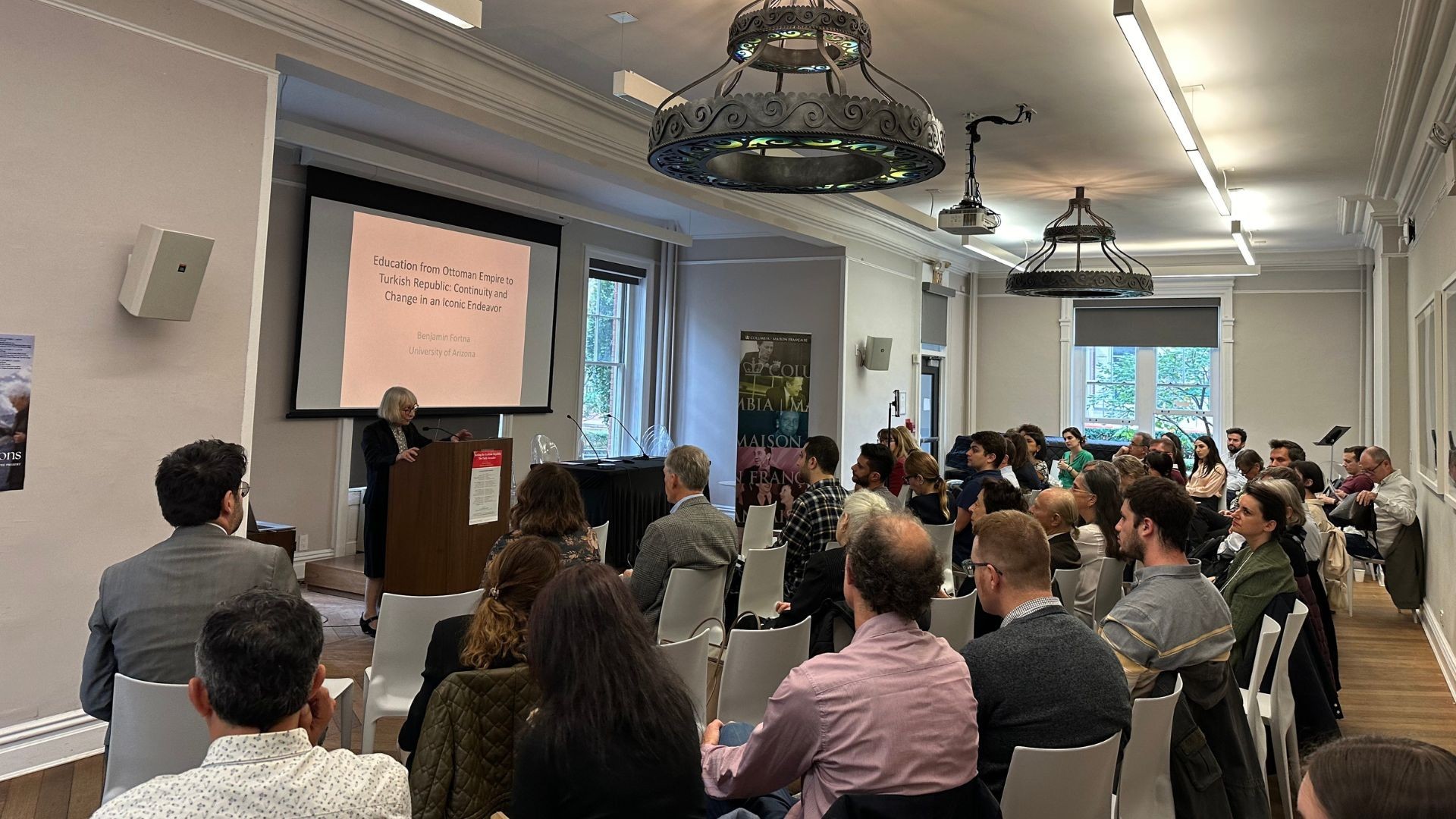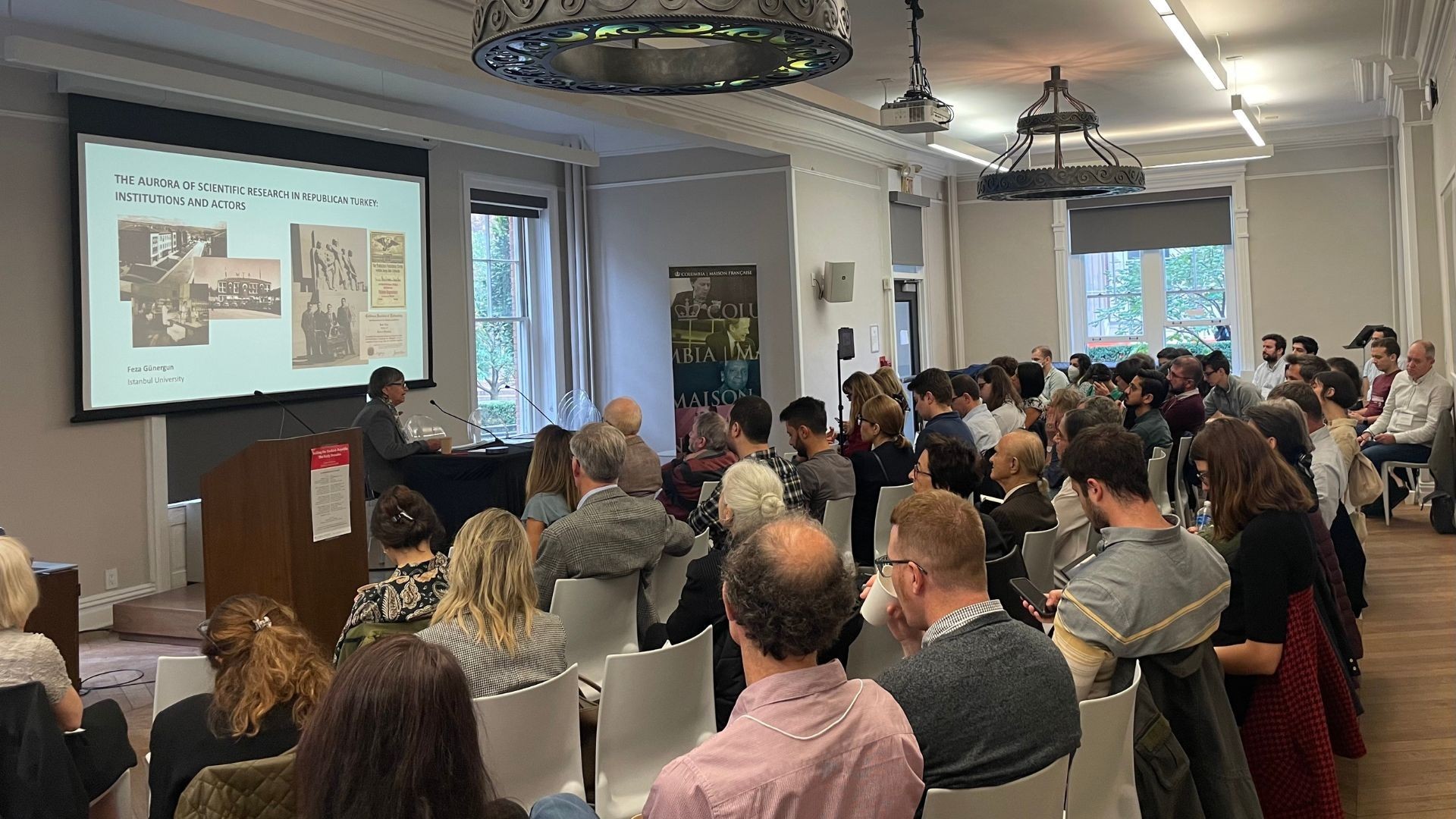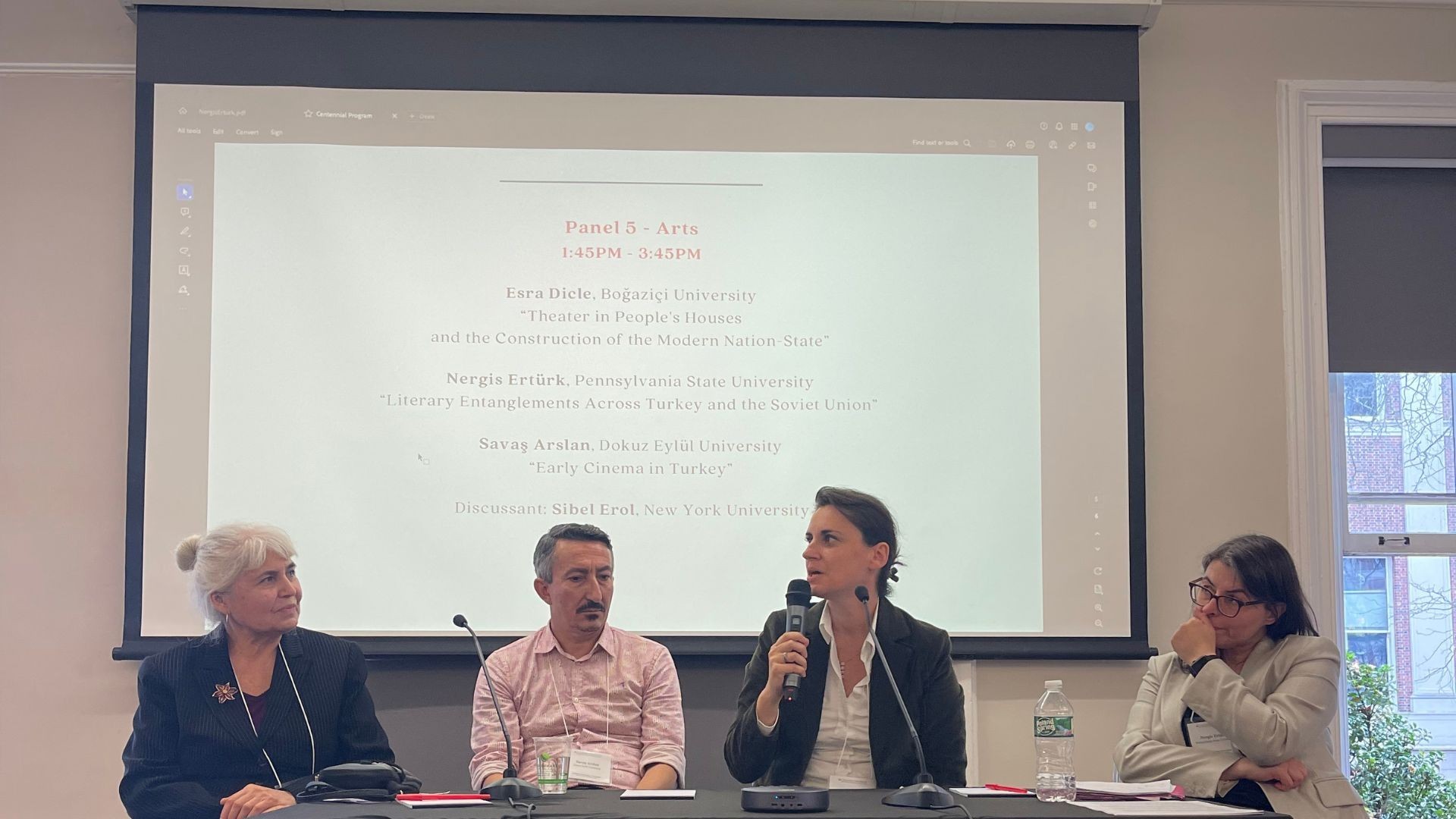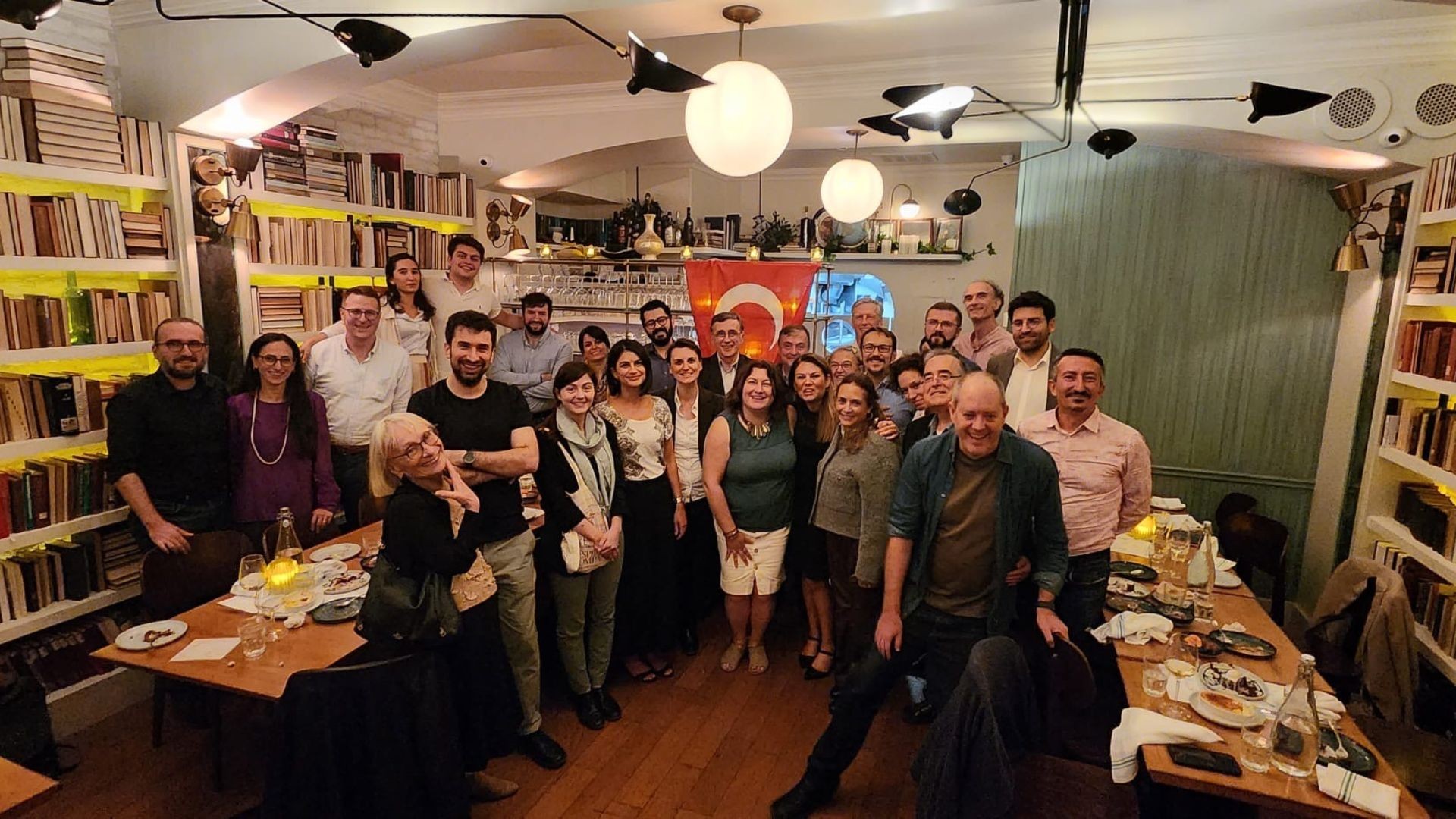Building the Turkish Republic: Highlights from the Centennial Conference

Organized in collaboration with the Columbia Global Centers | Istanbul, this recent two-day conference, commemorating the centennial of the Turkish Republic, provided an in-depth exploration of the foundational developments, institutional policies, dissenting voices, and cultural affairs that shaped the formative decades of modern Turkey from the 1920s to the 1940s. The conference served as a platform for scholarly discourse, featuring insights from 18 speakers and 6 discussants representing 20 academic institutions, 15 cities, and 4 countries. This diverse panel of experts contributed to a comprehensive understanding of the historical nuances under discussion.
Notably, the two-day in-person event drew significant attendance, with more than 80 participants actively engaging in the conference on each day. The presence of scholars, students, and enthusiasts added depth to the intellectual exchange, fostering a rich environment for the exploration of Turkey's multifaceted history.
Day One: Institutions, Identities, and Transformations

The conference opened with a warm welcome from Neslihan Şenocak, Director of Sakıp Sabancı Center for Turkish Studies at Columbia University. This was followed with introductory remarks by Zeynep Çelik, Sakıp Sabancı Visiting Professor, Columbia University and A. Tunç Şen, Deputy Director of SSC, Columbia University.
Institutions of the Early Days
The "Institutions" panel, a focal point of the day, meticulously explored pivotal aspects of the early Turkish Republic. The discussant was Nükhet Varlık from Rutgers University.
Benjamin Fortna from the University of Arizona unveiled the transformative journey of education from the Ottoman Empire to the Turkish Republic. In his presentation, Fortna highlighted the contrasts and continuities between the two eras, emphasizing the central role of the expanding public education system in both states' visions of modernization.
Ali Cengizkan from Middle East Technical University and Bilkent University talked about the planning decisions that shaped Ankara during 1920-1960. His narrative unfolded the growth of Ankara from a town of 20,000 to a bustling metropolis of 800,000 inhabitants, revealing the key turning points, planning history, and missed opportunities in the making of this modern 20th-century capital.
The exploration of scientific research by Feza Günergun from Istanbul University illuminated the early efforts to reform education and scientific research, emphasizing the emergence of institutions, the involvement of European researchers, and the unprecedented participation of Turkish women in scientific pursuits.
Peoples in Focus: Unraveling Identities
The second panel of the conference, titled "Peoples," shifted attention to the diverse communities within early Republican Turkey. The discussant was Mark Mazower from Columbia University.
Ari Şekeryan, an independent scholar, investigated the challenges faced by the Armenian community who stayed in Istanbul. Şekeryan’s paper navigated the intricacies of the "Armistice complex" and the Armenian response to state policies during the early Republican years.
Ayşe Ozil from Sabancı University, in her presentation, went beyond victimhood narratives to shed light on the active role of the Greek community at social and communal levels. Turning away from the macro view to ordinary people, Ozil’s paper offered to think non-Muslims as social agents who acted on the ground and navigated through the political and socio-economic conditions of the early republican period.
Louis Fishman of Brooklyn College, CUNY, explored the transition of the Ottoman Jewish community into a religious minority in the newly formed Turkish Republic in his presentation. Fishman's discussion encompassed the challenges and choices faced by the Jewish community during this transformative period.
Religion and Society
The concluding panel of the first day, themed "Religion," provided insights into the interplay between Turkey, Islam, and the Middle East. The discussant was Joseph Massad from Columbia University.
Amit Bein from Clemson University delved into the radical reforms that transformed religious institutions and practices within Turkey. Bein's exploration extended to the impact of these reforms on Turkey's relations with post-Ottoman Muslim-majority countries in the Middle East.
Sevgi Adak from Aga Khan University presented on women and Kemalism, critically revisiting feminist historiography in Turkey. Adak argued that despite patriarchal limitations, the early republic's gender policies increased the opportunity space for women.
Markus Dressler from Leipzig University concluded the day with "Nationalist Knowledge Production and Policies on the Alevis in the Kemalist Era," shedding light on how nationalist knowledge production influenced policies towards the Alevi community during the early years of the Turkish Republic.
Day Two: Building Blocks and Various Expressions

The second day of the centennial conference, commemorating the 100th anniversary of the Turkish Republic, looked into crucial aspects of the nation's foundations, exploring social policies, arts, and political opposition.
The day commenced with a warm welcome from İpek Cem Taha, Director of Columbia Global Centers | Istanbul.
Foundations: Shaping the Nation's Fabric
The first panel, titled "Foundations," featured thought-provoking presentations that scrutinized key elements of the early Turkish Republic. The discussant was Benjamin Fortna from University of Arizona.
In her paper read by Ayşe Polat, Ayşe Buğra from Boğaziçi University emphasized the unique social policy challenges faced by early Republican Turkey, where limited urbanization and a developing economy shaped the interventions. Despite appearing insignificant compared to contemporary measures, social policies reflected the founders' vision for rural and industrial development. Buğra argued that revisiting these early approaches might offer insights into current issues such as regional concentration of industry and unplanned urbanization.
Reşat Kasaba from the University of Washington explored "The Masters of the Nation: The Early Republican State and Turkey’s Peasants." Kasaba highlighted the crucial role of the rural population in the early decades of the Republic. The policies aimed to keep the rural population in place while transferring created value to urban areas. Despite limited success, these policies contributed to the widening gap between urban and rural parts, eventually abandoned in the post-WWII era and the democratic transformations of the 1950s.
In his presentation, Levent Köker from Gazi University delved into the dual nature of revolution, examining the constitutional-legal shifts from democratic beginnings to authoritarian reforms. Köker suggested that the normative contradictions between the democratic revolutionary start of 1921 and subsequent authoritarian reforms shaped the trajectory of multi-party politics and the struggle to establish a democratic polity.
Arts: The Cultural Landscape
The second panel, "Arts," explored the role of cultural expressions in shaping the modern Turkish identity. The discussant was Sibel Erol from New York University.
Esra Dicle from Boğaziçi University presented "Theater in People's Houses and the Construction of the Modern Nation-State." Dicle highlighted the instrumental role of theater in constructing a new Turkish identity based on Western norms. The Halkevleri, or the People’s Houses, centralized artistic activities, using them to instill national identity and consciousness. The paper discussed the relationship between dominant powers and oppositional ideologies, as reflected in the theatrical productions of the time.
Nergis Ertürk from Pennsylvania State University discussed the historical fiction of Nizamettin Nazif and Vâlâ Nureddin, members of the Turkish Communist Party who traveled to Bolshevik Russia in the early 1920s. Ertürk argued that their writings served as a literary record of the entanglements between Anatolian and Bolshevik revolutions.
Savaş Arslan from Dokuz Eylül University explored early cinema in Turkey. Arslan traced the evolution of cinema in Turkey through distinct eras, from its arrival in the late Ottoman era to the formation of a new cinema in the 1990s. The presentation highlighted cinema's role as a medium representing the national narrative and discussed the cultural implications of the transition to sound film.
Opposition: Dynamics of Dissent
The final panel, "Opposition," shed light on the political landscape during the early Republican period. The discussant was Ayşe Kadıoğlu from Sabancı University.
Christine Philliou’s paper read by Yasemin Akçagüner focused on "Muhalefet and the Transposition of Political Opposition, 1918-1928." Philliou’s paper offered insights into the establishment and formative period of the Turkish Republic, challenging simplistic narratives of rupture or continuity. Philliou, from University of California, Berkeley, introduced the concept of "transposition" to understand the relationships between individual actors, political parties, and state formations during this crucial decade.
James Ryan from the Foreign Policy Research Institute talked about the intersections of gender, race, and class politics during the early years of the Republic, providing a nuanced understanding of dissent dynamics.
İlker Aytürk from Bilkent University critically examined Şerif Mardin's influential center-periphery thesis, questioning its applicability to the early republican period. The talk explored state capacity, the strength of the early republican center, and the permeability of boundaries between the center and periphery.
Conclusion: Navigating the Competing Narratives

The two-day conference marking the centennial of the Turkish Republic provided a detailed examination of the foundational elements that shaped the country from the 1920s to the 1940s. Covering diverse topics such as education, urban planning, minority experiences, social policies, arts, and political opposition, the conference offered varied perspectives on the early Republican era. The presentations were grounded in historical analysis, contributing to a nuanced understanding of Turkey's formative years. The conference serves as a valuable resource for comprehending the complexities of the past, offering insights that may be relevant to contemporary discussions.
The culmination of the conference was marked by a public reception that further expanded the discourse beyond academic circles. This concluding event saw the active participation of over 100 guests on site, reflecting the broader societal interest in the centennial celebrations and the insights shared during the conference.
Original text sourced from Columbia Global Centers | Istanbul.
